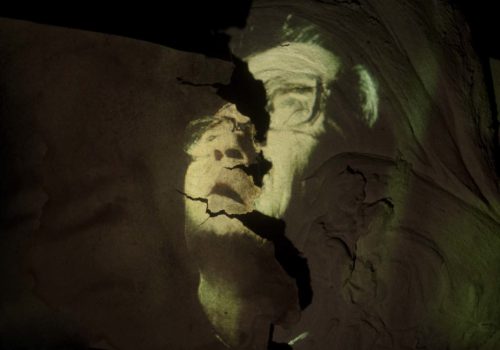Josef Hnik, born 1946, is a native of Prague. After graduating in art photography from FAMU, he started work as an advertising photographer, while pursuing his personal projects : he photographed nudes, portraits and still-life. Later, he opened an advertising agency and dedicated himself to making film advertisements.
Since 2001, he has focused exclusively on personal work – stylized still-lives using old photographic techniques such as: wooden bellows cameras with the original, primitive lenses dating back to the end of the 19th century, using 24x30cm up to 30×50 cm negatives.
Lately, he has focused on experimental portraits taken with a digital camera. He finds inspiration for his work on the Internet – using a classical photographic technique he takes photographs of pictures displayed on his computer monitor and then works with the resulting pictures with the aid of a projection technique. The resulting photographs become the final product without any further digital adjustment.
The project introduced here has been ongoing since the beginning of last year.
Another Face of Serial Killers
About two years ago I opened my friend Josef Hnik’s two exhibitions in quick succession – one in Nova Sin and the other in Obecni dum, The first introduced his really excellent still-life images (I am not an expert but, personally, I think that, since the death of Josef Sudek, Czech photography hasn’t had many photographers who could fill the gap in a similar manner). The second exhibition was called Faces and showed a very interesting approach of the interpretation of human face (I purposefully didn’t say portraits, even though they obviously were precisely that).
This current exhibition also shows faces, but these faces are very different. They are not faces of famous people who were the leitmotif of the previous exhibition. Here we look into the faces of several serial killers, whose crimes were terrible and beyond human comprehension. We look into the faces of individuals for whom murders meant excitement, an aesthetic pleasure or even an intellectual problem.
They are not portraits in the classical sense of the word (a complicated and intellectually exhausting analysis of its meaning could probably follow here), but at the same time they are deep immersions into the human psyche (in this case a deformed one). In fact, we expect that kind of immersion in every good portrait that is more than just a capture of a superficial likeness (I am thinking of Velazquez’s portraits of the court jesters or Tizian’s amazing portrait of Pope Paul III and his nephews, Alessandro and Ottavio Farnese).
Even the method employed in creating the portraits is remarkable. When I saw these pictures for the first time, I felt (I might have even been shocked) that Josef abandoned his principles and embarked on a journey of manipulated digital photography. When I timidly asked him my carefully formulated question, I got this answer: the original pictures are indeed taken from the Internet and they are then projected on varied, carefully selected materials or a combination of them, or even ‘scrummage’ (so that, for example, the apparent spatial shifts are in fact real spatial shifts) and then they are photographed; what we see on a photographic plate, we also see as the final result here on the wall.
In the years we have known each other, I‘ve come to know Josef Hnik as a human being who is enthusiastic about his art but who also thinks deeply about his work, a person who doesn’t give in to superficial temptations of fashion trends and easy solutions, however effective they may seem.
The problem of contemporary and recent art is its relationship with subjectivity. There are influential and aggressively pushy interpretations of art as a form of artistic personal expression of his sensitive soul, when subjectivity is both the method and the aim of the artistic endeavour; when a simple statement converts anything into art. In my opinion, there is nothing more false than that. Subjectivity and objectivity are only raw materials, which have to be worked on, in order to give some structure to this shapeless material. Not from within but above oneself; that’s how real creativity takes place. Subjectivity breeds superficiality and cheap seductiveness, which is the essence of the tabloids. The majority of contemporary art is tabloid art.
Josef Hnik knows that. Josef Hnik doesn’t publish tabloids; he doesn’t even publish serious newspapers. Josef Hnik publishes high quality, narrowly specialized review that have an exceptional impact.
Ivan Bukovsky
Another Face of Serial Killers
Photographs by Josef Hnik
Curator : Daniela Mrazkova
Until April 21, 2013
Czech Photo Gallery
Újezd 19, Praha 1 – Malá Strana
Czech Republic
















